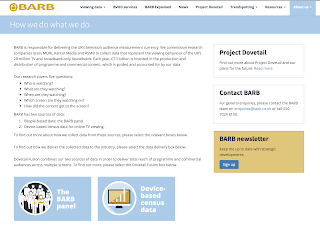Research Portfolio
Primary Research:
This is a survey I created to try and gauge what the public opinion and interest is in the teen genre of movie as well as interest in my own idea for a teen screenplay. I think it's a good example of research as it helped me collect a good set of data that ultimately helps the understanding of how people view teen movies and mental health, especially from the viewpoint of teens themselves.
These are the responses from my survey all bundled into one flip book. This is good research for mostly the same reasons as the previous summary, however in this case not only is it more specific with data correlation at play its also public information that can be used as secondary research.
Secondary Research:
Unilever rebranding pitch - This presentation was my rebranding of Ben and Jerrys, and it has a few good examples of secondary research. the first one is a demographic chart that shows a lot of data on the types of people who buy Ben and Jerrys products, which is useful as it gives a good overview of who would be interested in the product. The second example is some BARB info on different access to technology in the UK showing how many people have access to games consoles, as well as the highest viewed programs on TV at the time.
Advert analysis post - This post I made analysing a previous Ben and Jerrys advert is a good example of secondary research as I had to look into the ASA and CAP broadcasting codes to find the information within the post itself.
DepicT! research post - My post on various DepicT! entries through the years was good secondary research as watching the previous submissions gave me a good idea as to what a DepicT! entry needs to follow and contain, which for the most part can be anything that fits the 90 second time frame.
Quantitative Research:
These results from the previously embedded survey are all of the quantitative results, which may be less descriptive but give us a good overview of a variety of things that gets more accurate per respondent. A good example from these is the question on whether the respondent thinks that the mental health of teens is represented in society enough, in which none of the 15 respondents said yes, showing a clear lack of awareness on the subject that desperately needs to made noticeable.
Qualitative Research:
These are the qualitative results from the survey which give a more specific and personal opinion towards a topic, and while taking more time analyse than quantitative data, they can be more useful as it shows the specific things that people want to see. For example, in response to my question about the romanticisation of the teen lifestyle in media, many people made comments that it was very harmful to the expectations and standards of teens and what is put on teens by other age groups.
Production Research:
From my pre-production paperwork for my DepicT! project there are a couple examples of production research, namely the location recces and the risk assessment. The location recces are important research for production as finding the best location for a shoot depends on many factors, like parking, accessibility, how available the timing is and distance. Risk assessment is important research for most industries, television and film is no exception, and for a production is required research to make sure that all shoots and locations have a low overall risk based on likelihood and severity.
Audience and Market Research:
Shown above (top) is a slide from my script proposal prezi is a slide displaying my own research on the current market for film I undertook to show the demand for more unique and niche films, and below it is a screenshot from my Unilever rebranding pitch is a slide I filled with audience research for the current consumer demographic for Ben and Jerry's ice cream, complete with a graph from numerator showing multiple demographic factors such as race, income, age, etc. and who in those categories is more likely to buy the product.




Comments
Post a Comment